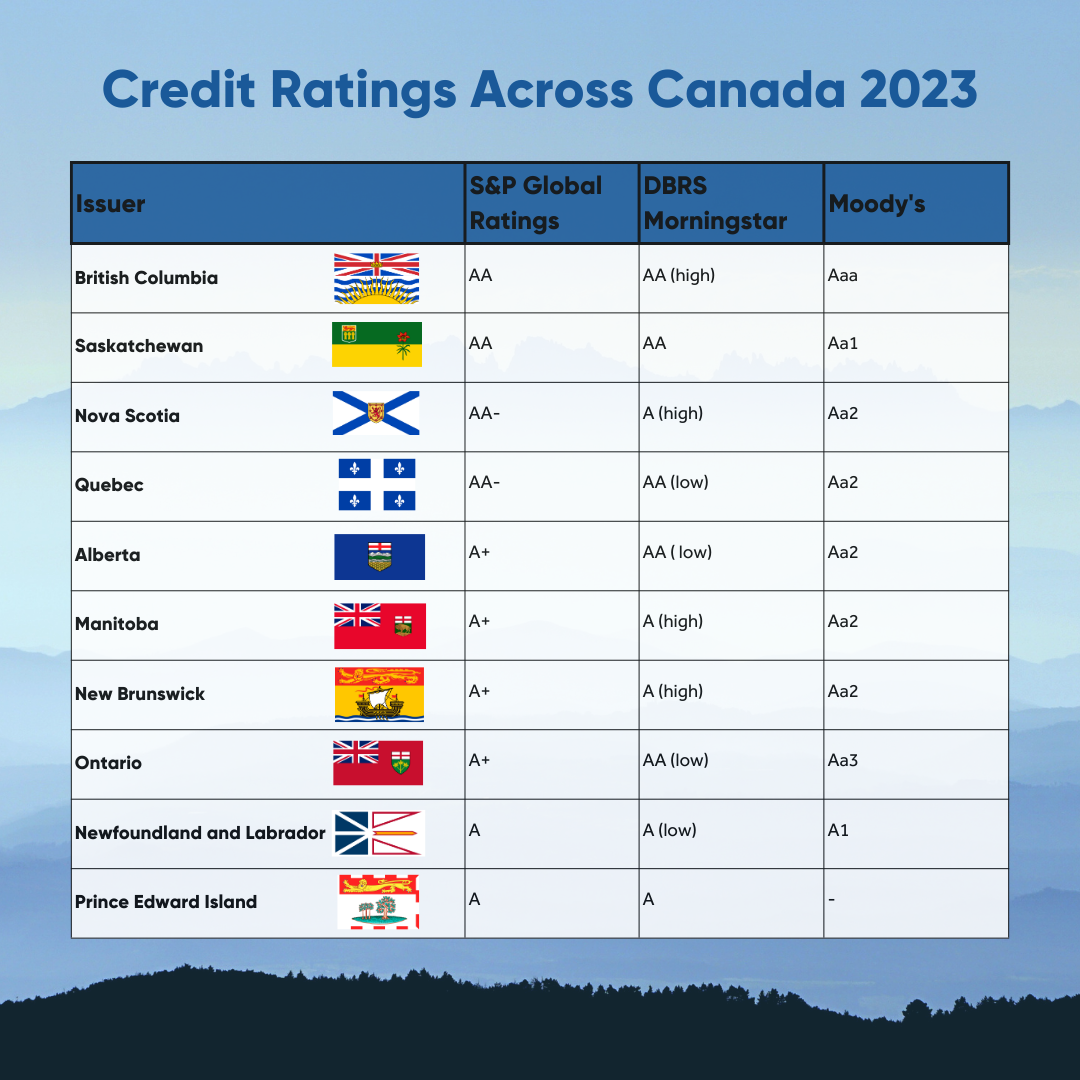S&P Downgrades BC's Credit Rating, Province Remains on Par with Saskatchewan as Highest Rated
British Columbia's credit rating was recently downgraded by S&P Global Ratings this week from AA+ to AA, largely due to the province's 2023 budget. The budget outlines an extensive investment plan for operations and record levels of capital spending. B.C. was stripped of its top AAA rating to AA+ by S&P back in July 2021.
Why Was British Columbia Downgraded?
The proposed 2023 budget will reverse the fiscal gains made in the past two years, resulting in the return of operating deficits, larger after-capital deficits, and a relatively steep increase in debt through to fiscal 2026. The negative outlook is attributed to the expectation that a material increase in spending “will lead to a large after-capital deficit in excess of 10% of total revenues, affecting internal liquidity and maintaining it at low levels” S&P’s press release states.
What Is the Impact of The Downgrade?
The impact of the downgrade will likely be felt through several channels. Firstly, it could increase borrowing costs for the province, as investors may demand higher yields for taking on additional risk associated with a lower credit rating. This, in turn, could put further pressure on the province's finances, potentially leading to a need for even greater debt issuance or spending cuts in the future. Secondly, the downgrade could also have broader economic consequences, as businesses and investors may perceive the province as a riskier place to invest.
What Is British Columbia’s Economic Outlook?
The outlook for British Columbia's pace of recovery remains uncertain, with growth expected to slow in 2023 due to elevated levels of inflation and high-interest rates. The province's commitment to fiscal discipline and stability has waned with the release of the current budget, which will result in large spending increases for both operations and capital investments. The province's internal liquidity position is expected to be negatively affected and remain at low levels, with tax-supported debt increasing to about 160% of operating revenue by 2026. While this level remains below that of other Canadian provinces, the downgrade serves as a reminder of the potential risks associated with high debt levels and the importance of maintaining fiscal discipline.
What Will This Cost Taxpayers?
After S&P's announcement on April 19, 2023, if we compare the yields of nine British Columbia bonds with their yields from April 12, 2023, we can see that the weighted average difference in yield has increased by 0.22%.
Based on the total amount of bond issuances by the province in 2022, this would equate to roughly an additional $13.3 million cost to taxpayers to cover each debt issuance, per year.
With the average lifetime of a 2023 British Columbia provincial bond of 5 years, the total would be $57.5 million in additional interest expense incurred in 2023 alone.
Provincial credit ratings as of April 21, 2023.
Despite the recent downgrade, British Columbia is on par with Saskatchewan for holding the highest provincial credit rating by S&P. Currently, British Columbia ranks highest by credit rating from DBRS Morningstar and Moody’s at AA (high) and Aaa, respectively.
As always, if you have any questions about today’s Market Update, you can call us at 604-643-0101 or email cashgroup@cgf.com
Market Updates
Our market commentary breaks down the latest business, financial and money news. If you’d like to receive all of our market update emails, send us an email by clicking the subscribe button. If you found this content helpful, share it widely!


